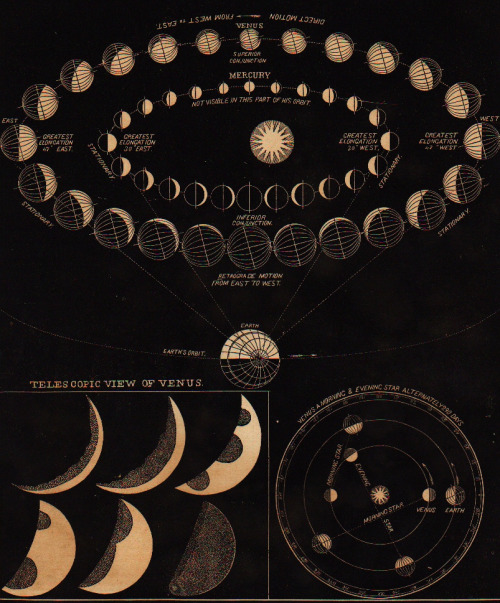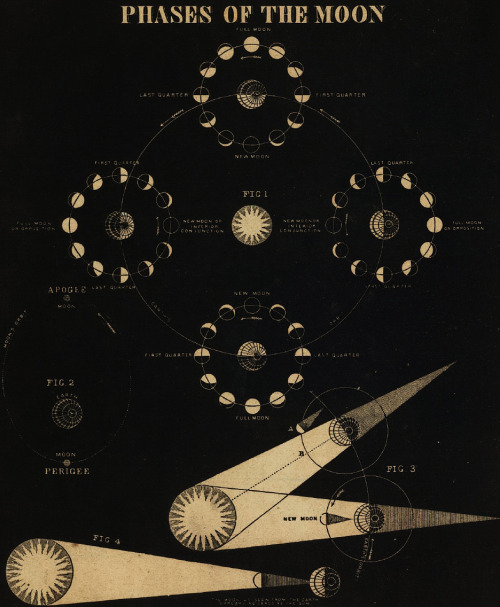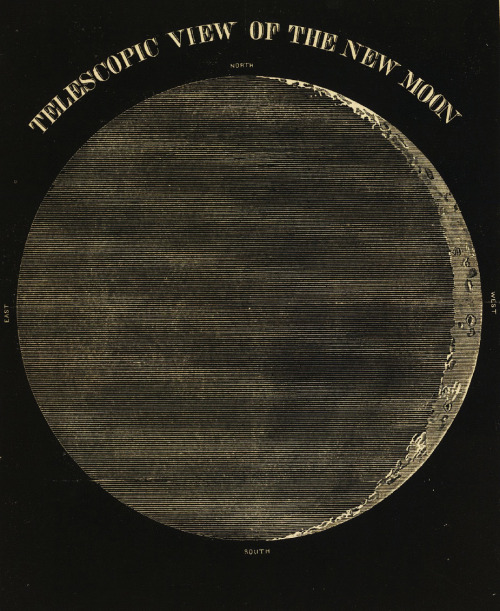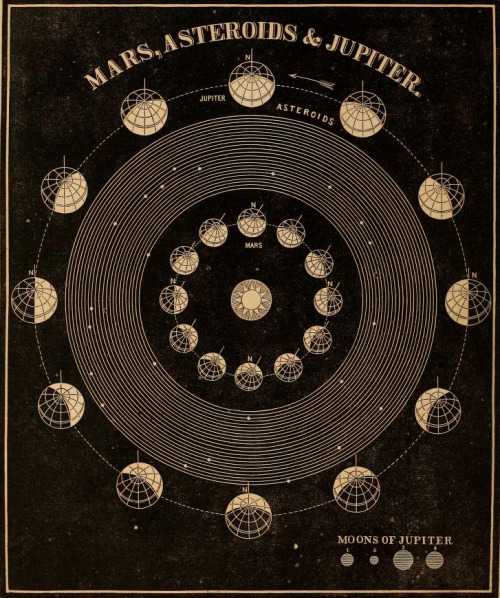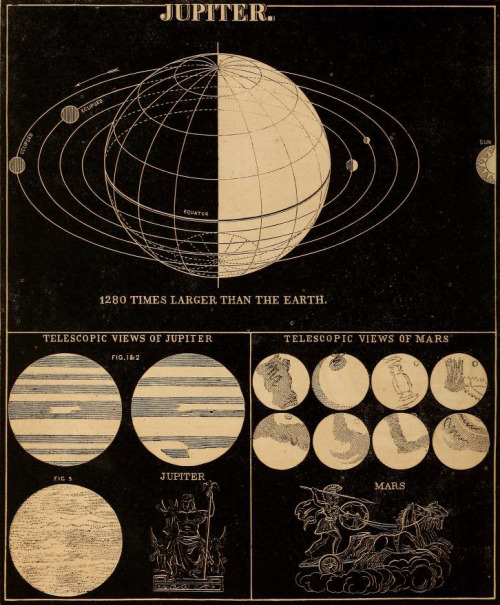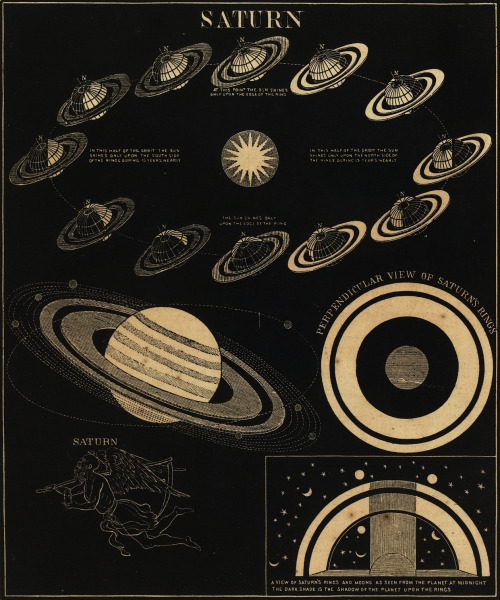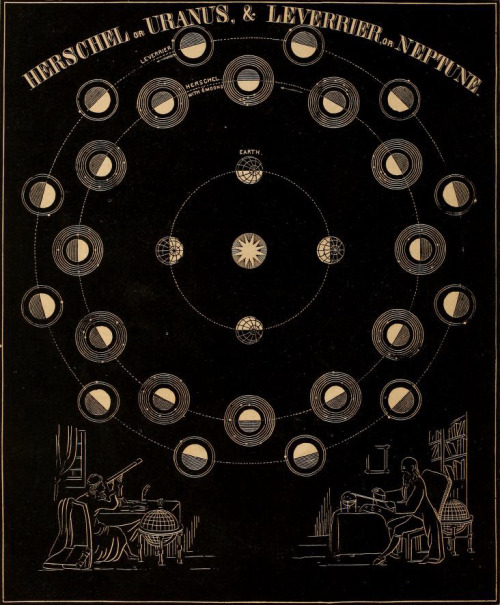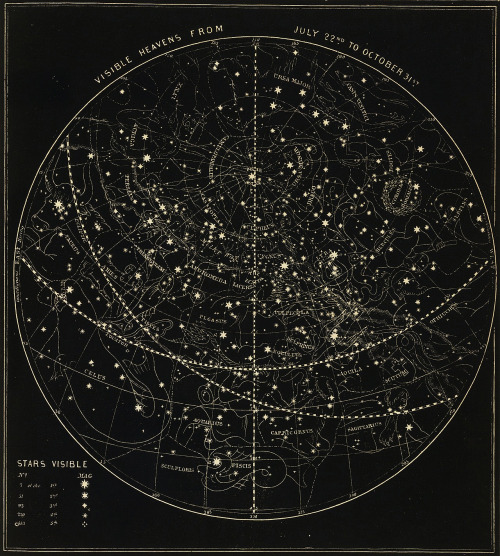The United Launch Alliance’s Atlas V Rocket Carrying The Orbital ATK Cygnus Module Rolls To Cape Canaveral
The United Launch Alliance’s Atlas V rocket carrying the Orbital ATK Cygnus module rolls to Cape Canaveral Air Force Station’s Launch Pad 41 in this time-lapse video. The rollout is in preparation for the Orbital ATK CRS-7 mission to deliver supplies to the International Space Station.
Launch is currently scheduled for 11:11 a.m. EDT, watch live coverage: http://www.nasa.gov/live
Make sure to follow us on Tumblr for your regular dose of space: http://nasa.tumblr.com
More Posts from Fillthevoid-with-space and Others
Hahaha, right after I start out a podcast talking about how we’ll never poke the Sun, it turns out we’re sending a probe to do just that!
Solar System: Things to Know This Week
Mark your calendars for summer 2018: That’s when we’re launching a spacecraft to touch the sun.
In honor of our first-ever mission to the heart of the solar system, this week we’re delving into the life and times of this powerful yellow dwarf star.

1. Meet Parker
Parker Solar Probe, our first mission to go to the sun, is named after Eugene Parker, an American astrophysicist who first theorized that the sun constantly sends out a flow of particles and energy called the solar wind. This historic mission will explore one of the last regions of the solar system to be visited by a spacecraft and help scientists unlock answers to questions they’ve been pondering for more than five decades.

2. Extra SPF, Please
Parker Solar Probe will swoop within 4 million miles of the sun’s surface, facing heat and radiation like no spacecraft before it. The mission will provide new data on solar activity to help us better understand our home star and its activity - information that can improve forecasts of major space-weather events that could impact life on Earth.

3. Majorly Massive
The sun is the center of our solar system and makes up 99.8 percent of the mass of the entire solar system. If the sun were as tall as a typical front door, Earth would be about the size of a nickel.
4. Different Spin
Since the sun is not a solid body, different parts of the sun rotate at different rates. At the equator, the sun spins once about every 25 days, but at its poles the sun rotates once on its axis every 36 Earth days.

5. Can’t Stand on It
The sun is a star and a star doesn’t have a solid surface. Rather, it’s a ball of ionized gas 92.1% hydrogen (H2) and 7.8% helium (He) held together by its own gravity.
6. Center of Attention
The sun isn’t a planet, so it doesn’t have any moons. But, the sun is orbited by eight planets, at least five dwarf planets, tens of thousands of asteroids, and hundreds of thousands to trillions of comets and icy bodies.

7. It’s Hot in There
And we mean really, really hot. The temperature at the sun’s core is about 27 million degrees Fahrenheit. However, its atmosphere, the corona, can reach temperatures of 3 million degrees. (That’s as if it got hotter the farther away you got from a fire, instead of cooler!) Parker Solar Probe will help scientists solve the mystery of why the corona’s temperature is so much higher than the surface.

8. Travel Conditions
The sun influences the entire solar system, so studying it helps us better understand the space weather that our astronauts and spacecraft travel through.
9. Life on the Sun?
Better to admire from afar. Thanks to its hot, energetic mix of gases and plasma, the sun can’t be home to living things. However, we can thank the sun for making life on Earth possible by providing the warmth and energy that supply Earth’s food chain.
10. Chance of a Lifetime
Last but not least, don’t forget that the first total solar eclipse to sweep across the U.S. from coast-to-coast since 1918 is happening on August 21, 2017. Our toolkit has you need to know to about it.
Want to learn more? Read our full list of the 10 things to know this week about the solar system HERE.
Make sure to follow us on Tumblr for your regular dose of space: http://nasa.tumblr.com

We’re back in 2019 with an episode that would have been more appropriate to release during hurricane season: a discussion of the Coriolis force! This force was observed centuries ago but takes its name from the scientist who first considered it in terms of theory and physics. It has an impact on a vast range of natural phenomena, from weather patterns to ocean waves to the flights of flies and moths.
Below the cut are the glossary, transcript, a timeline of the people I mention, sources, and music credits. Send me any topic suggestions via Tumblr message (you don’t need an account to do this, just submit as anonymous). You can also tweet at me on Twitter at @HDandtheVoid, or you can ask me to my face if you know me in real life. Subscribe on iTunes to get the new episodes of my so-far-monthly-updated podcast, and please please please rate and review it. Go ahead and tell friends if you think they’d like to hear it, too!
(My thoughts on the next episode are Stephen Hawking, Hedy Lamarr, or famous comets. The next episode will go up in late February.)
Glossary
Coriolis force - a force in a rotating system that acts perpendicular to the direction of motion and to the axis of rotation. On Earth, this tends to deflect moving objects to the right in the Northern Hemisphere and to the left in the Southern Hemisphere.
Ekman transport - the net motion of fluid that results from the balance between Coriolis and turbulent drag forces.
Eötvös effect - the change in perceived gravitational force that results from eastbound or westbound movement on Earth’s surface.
Kelvin waves - an ocean wave that is trapped at the Earth’s equator and along vertical boundaries like coastlines. They move towards the equator when they have a western boundary; towards the poles when they have an eastern boundary; and make a whirlpool when they have a closed boundary, moving counterclockwise in the Northern Hemisphere and clockwise in the Southern Hemisphere.
Lagrange points - five points where three bodies can orbit each other, yet stay in the same position relative to each other in a stable configuration. L1-L3 are in line with each other, while L4 and L5 are at the points of equilateral triangles in the configuration.
prograde - when a planet spins from east to west.
Rossby number - used to determine the relative importance of the centrifugal and Coriolis forces in maps of weather patterns. A small Rossby number indicates that a weather system is strongly affected by Coriolis forces, while a large Rossby number signifies that a system is affected by inertial and centrifugal forces.
Transcript
Timeline
Giovanni Battista Riccioli, Italian (1598-1671)
Francesco Maria Grimaldi, Italian (1618-63)
Joseph-Louis Lagrange, French (1736-1813)
Gaspard-Gustave de Coriolis, French (1792-1843)
Sir William Thompson, AKA Lord Kelvin, Scots-Irish (1824-1907)
Baron Loránd Eötvös de Vásárosnamény, Hungarian (1848-1919)
Ottokar Tumlirz, Austrian (1856-1928)
Fridtjof Nansen, Norwegian (1861-1930)
Vagn Walfrid Ekman, Swedish (1874-1954)
Carl-Gustaf Arvid Rossby, Swedish-born American (1898-1957)
Sources
Coriolis Effect via the University of Oregon
Coriolis Force via Wikipedia
Coriolis effect, two centuries before Coriolis via Physics Today (Aug 2011)
Gaspard-Gustave de Coriolis via Wikipedia
Coriolis effect via National Geographic
Hurricane, cyclone, typhoon, tornado – what’s the difference? via African Reporter (Sep 2017)
Wang, B. Kelvin Waves. University of Hawaii: Honolulu, 2002.
Ocean in Motion: Ekman Transport Background via NASA
Ekman transport via Wikipedia
What is a Geodesist? via Environmental Science
“The Second Coming” by W. B. Yeats via Poetry Foundation
Intro Music: ‘Better Times Will Come’ by No Luck Club off their album Prosperity
Filler Music: ‘Ambergris’ by Tipper off their EP Fathoms
Outro Music: ‘Fields of Russia’ by Mutefish off their album On Draught




Check out the makeshift pinhole-camera results from 99% totality! Leaves and my own hands work quite nicely to get an image of the little sliver of sunlight that was left. I had eclipse glasses but don't have any pictures from them: 99% is still not enough to reduce the sun's light very much. It got a little gloomier and I talked about it on Twitter but otherwise it was pretty uneventful! I'm glad I'm not on the road home from eclipsing. It would be cool to see totality one day, though.

The Elephants Trunk in IC 1396 : Like an illustration in a galactic Just So Story, the Elephants Trunk Nebula winds through the emission nebula and young star cluster complex IC 1396, in the high and far off constellation of Cepheus. Of course, the cosmic elephants trunk is over 20 light-years long. This composite was recorded through narrow band filters that transmit the light from ionized hydrogen, sulfur, and oxygen atoms in the region. The resulting image highlights the bright swept-back ridges that outline pockets of cool interstellar dust and gas. Such embedded, dark, tendril-shaped clouds contain the raw material for star formation and hide protostars within the obscuring cosmic dust. Nearly 3,000 light-years distant, the relatively faint IC 1396 complex covers a large region on the sky, spanning over 5 degrees. via NASA
js

I imagine most people wanted to be astronauts when they learned it was a job they could have - I certainly did! And then I thought about it and realized podcasting about outer space was much less scary and much more achievable than becoming an astronaut, with the bonus of not having to wonder how hard I’d panic in an enclosed-yet-surrounded-by-vastness space. There have been a lot of people braver than me who went to space, and some of them went to space on long-term missions lasting months or a year, living on the International Space Station (or the historical equivalent, depending on when in history this happened). Learn what resources are available to ISS astronauts, and what risks there are out there (apart from the obvious ones).
Sorry I missed last week, but it was New Year’s and I don’t feel very guilty. Get excited about more space podcasts in 2018, though! Below the cut are my sources, music credits, a vocab list, and the transcript of this episode. I bolded any videos or sources that I mentioned in the podcast, if you’re looking for those specifically. Go ahead and suggest what you think I should research next by messaging me here, tweeting at me at @HDandtheVoid, or asking me to my face if you know me. Please subscribe on iTunes, rate it and maybe review it, and tell friends if you think they’d like to hear it!
(My thoughts on the next episode are more about astronauts, or I could go into the transit of Venus. I have a couple books about space I should really get into reading… The next episode will go up January 22nd.)
Glossary
free fall - the downward movement of an object that is due to the force of gravity alone.
gravity - the phenomenon which causes all things with mass to move towards each other. On the universal scale, this is caused by the warping of spacetime by objects with large mass, e.g. stars and planets, and is explained through Einstein’s theory of general relativity.
microgravity - the state of perpetual free fall in a gravity field.
orbit - the gravitationally curved trajectory of an object, e.g. the trajectory of a satellite around a planet.
Script/Transcript
Sources
Yuri Gagarin via NASA
Microgravity via NASA (Feb 2012)
The history of astronaut life via the Smithsonian Air and Space Museum
Menstruation in space via National Geographic (Apr 2016)
The Air We Breathe via the Smithsonian Environmental Research Center
Breathing Easy on the Space Station via NASA (Nov 2000)
Jay Perry: “the chemical-mechanical systems are much more compact, less labor intensive, and more reliable than a plant-based system.”
Astronaut’s Home Videos Show How to Cook in Space via Space.com (Mar 2013)
Astronaut Hygiene: How to Wash Your Hair In Space (Video) via Space.com (July 2013)
Interview with former astronaut Prof. Jeremy Hoffman via the University of Leicester
A day in the life aboard the International Space Station via NASA (2015)
Zvezda Module Overview via NASA
Food for Space Flight via Nasa (Feb 2004)
John Glenn via NASA (Feb 2012)
Crew From U.S., Russia and Japan Expands Space Population to Six via NASA (Dec 2017)
ISS blog with experiment updates via NASA
Astronaut daily life via ESA (Nov 2012)
The Skylab 4 Mutiny, 1973 via libcom.org (Apr 2004)
Carr: “On the ground, I don’t think we would be expected to work a 16-hour day for 85 days, and so I really don’t see why we should even try to do it up here.”
‘Space Oddity’ by Chris Hadfield via YouTube
Interview with astronaut Chris Hadfield via NPR (Oct 2013)
Col. Chris Hadfield: “The contrast of your body and your mind inside … essentially a one-person spaceship, which is your spacesuit, where you’re holding on for dear life to the shuttle or the station with one hand, and you are inexplicably in between what is just a pouring glory of the world roaring by, silently next to you — just the kaleidoscope of it, it takes up your whole mind. It’s like the most beautiful thing you’ve ever seen just screaming at you on the right side, and when you look left, it’s the whole bottomless black of the universe and it goes in all directions. It’s like a huge yawning endlessness on your left side and you’re in between those two things and trying to rationalize it to yourself and trying to get some work done.”
Excerpt from memoir by former astronaut Scott Kelly via the Sunday Morning Herald (Oct 2017)
Intro Music: ‘Better Times Will Come’ by No Luck Club off their album Prosperity
Filler Music: ‘Major Tom’ by Shiny Toy Guns off their album Major Tom.
Background Music: ‘Leaves’ by Patients aka Ben Cooper, who primarily releases music as Radical Face but also has at least three other bands or band names he’s working with/has released music as.
Outro Music: ‘Fields of Russia’ by Mutefish off their album On Draught










Meet SA-500D, the first Saturn V rocket. Wernher von Braun designed her as the dynamic test article for the program. She was assembled stage by stage inside the Dynamic Test Stand at NASA Marshall Spaceflight Center, then subjected to lateral, longitudinal, and torsional vibrations equal of that of launch for a total of 450 hours.
The first time I visited SA-500D in 1999, she was outside on the US Space and Rocket Center property. Her paint was faded and worn, having sat there since 1969. In 2005, full restoration began, and she was moved inside her new facility, the Davidson Center for Space Exploration in Huntsville, Alabama. I’m happy to report that as of Sunday, April 27, 2014, she looks great. Viewing the newly restored rocket is magnitudes more impactful. The difference is incredible.

One-year countdown to solar eclipse, August 21, 2017: path of totality overlaid on U.S. population density and interstate map.

Bright Spiral Galaxy M81 : One of the brightest galaxies in planet Earths sky is similar in size to our Milky Way Galaxy: big, beautiful M81. This grand spiral galaxy can be found toward the northern constellation of the Great Bear . This superbly detailed view reveals M81s bright yellow nucleus, blue spiral arms, and sweeping cosmic dust lanes with a scale comparable to the Milky Way. Hinting at a disorderly past, a remarkable dust lane actually runs straight through the disk, to the left of the galactic center, contrary to M81s other prominent spiral features. The errant dust lane may be the lingering result of a close encounter between M81 and its smaller companion galaxy, M82. Scrutiny of variable stars in M81 has yielded one of the best determined distances for an external galaxy 11.8 million light-years. via NASA
js


This is a Trichroic Beam Splitter.
Using this splitter a white beam of light can be separated into three colours. Red, Blue and Green.
Source
-
 kindasketchysstuff liked this · 8 years ago
kindasketchysstuff liked this · 8 years ago -
 emptiness-personified-blog liked this · 8 years ago
emptiness-personified-blog liked this · 8 years ago -
 computer--cats liked this · 8 years ago
computer--cats liked this · 8 years ago -
 qvacer liked this · 8 years ago
qvacer liked this · 8 years ago -
 totallyloudcollection-blog reblogged this · 8 years ago
totallyloudcollection-blog reblogged this · 8 years ago -
 tremendousjellyfishpaper-blog reblogged this · 8 years ago
tremendousjellyfishpaper-blog reblogged this · 8 years ago -
 deepestphilosopherprince-blog reblogged this · 8 years ago
deepestphilosopherprince-blog reblogged this · 8 years ago -
 crazyvoidninja-blog reblogged this · 8 years ago
crazyvoidninja-blog reblogged this · 8 years ago -
 rjbailey reblogged this · 8 years ago
rjbailey reblogged this · 8 years ago -
 rjbailey liked this · 8 years ago
rjbailey liked this · 8 years ago -
 profoundlymagicalnut-blog reblogged this · 8 years ago
profoundlymagicalnut-blog reblogged this · 8 years ago -
 lazilypleasantbouquet-us-blog reblogged this · 8 years ago
lazilypleasantbouquet-us-blog reblogged this · 8 years ago -
 happilyloudtastemaker-blog reblogged this · 8 years ago
happilyloudtastemaker-blog reblogged this · 8 years ago -
 humongousbreadstarfish-blog reblogged this · 8 years ago
humongousbreadstarfish-blog reblogged this · 8 years ago -
 casuallysweatybarbarian-blog reblogged this · 8 years ago
casuallysweatybarbarian-blog reblogged this · 8 years ago -
 annoyingenthusiastgladiato-blog2 reblogged this · 8 years ago
annoyingenthusiastgladiato-blog2 reblogged this · 8 years ago -
 tremendousjellyfishpaper-blog reblogged this · 8 years ago
tremendousjellyfishpaper-blog reblogged this · 8 years ago -
 perfectpeacecheesecake-blog reblogged this · 8 years ago
perfectpeacecheesecake-blog reblogged this · 8 years ago -
 legendarycollectiontacoblog-blog reblogged this · 8 years ago
legendarycollectiontacoblog-blog reblogged this · 8 years ago -
 i-fullbouquetpizza-me-blog reblogged this · 8 years ago
i-fullbouquetpizza-me-blog reblogged this · 8 years ago -
 groovyturtlepeanut-blog reblogged this · 8 years ago
groovyturtlepeanut-blog reblogged this · 8 years ago -
 iwillwiggleyourears reblogged this · 8 years ago
iwillwiggleyourears reblogged this · 8 years ago -
 chewie53am liked this · 8 years ago
chewie53am liked this · 8 years ago -
 jchapa13 liked this · 8 years ago
jchapa13 liked this · 8 years ago -
 myheavens2betsy liked this · 8 years ago
myheavens2betsy liked this · 8 years ago -
 deacondoug liked this · 8 years ago
deacondoug liked this · 8 years ago -
 naturallog-t reblogged this · 8 years ago
naturallog-t reblogged this · 8 years ago -
 naturallog-t liked this · 8 years ago
naturallog-t liked this · 8 years ago -
 mongol-rain-photos-blog liked this · 8 years ago
mongol-rain-photos-blog liked this · 8 years ago -
 iamsavannahmay liked this · 8 years ago
iamsavannahmay liked this · 8 years ago -
 lazikade liked this · 8 years ago
lazikade liked this · 8 years ago -
 benguin2 liked this · 8 years ago
benguin2 liked this · 8 years ago -
 annyn reblogged this · 8 years ago
annyn reblogged this · 8 years ago -
 aliciaavram liked this · 8 years ago
aliciaavram liked this · 8 years ago -
 purple-beans liked this · 8 years ago
purple-beans liked this · 8 years ago -
 pkseymas-blog liked this · 8 years ago
pkseymas-blog liked this · 8 years ago -
 i-hercollectorkryptonite-blog reblogged this · 8 years ago
i-hercollectorkryptonite-blog reblogged this · 8 years ago -
 hellofamousphilosophercolle-blog reblogged this · 8 years ago
hellofamousphilosophercolle-blog reblogged this · 8 years ago -
 khoshekhofthefirenation reblogged this · 8 years ago
khoshekhofthefirenation reblogged this · 8 years ago -
 wyndighosts liked this · 8 years ago
wyndighosts liked this · 8 years ago -
 tosomja-blog1 liked this · 8 years ago
tosomja-blog1 liked this · 8 years ago
A podcast project to fill the space in my heart and my time that used to be filled with academic research. In 2018, that space gets filled with... MORE SPACE! Cheerfully researched, painstakingly edited, informal as hell, definitely worth everyone's time.
243 posts


